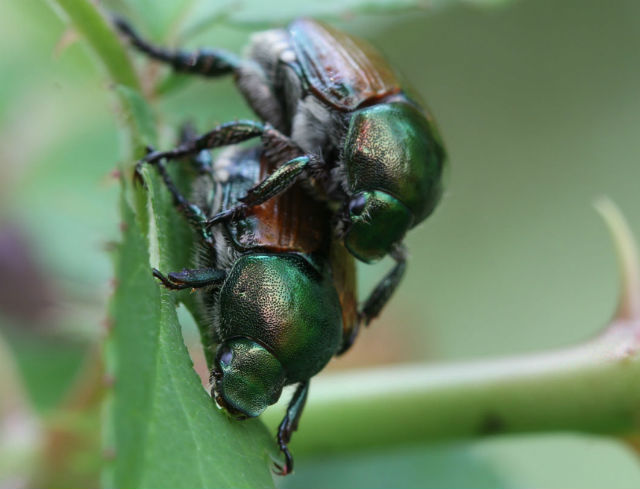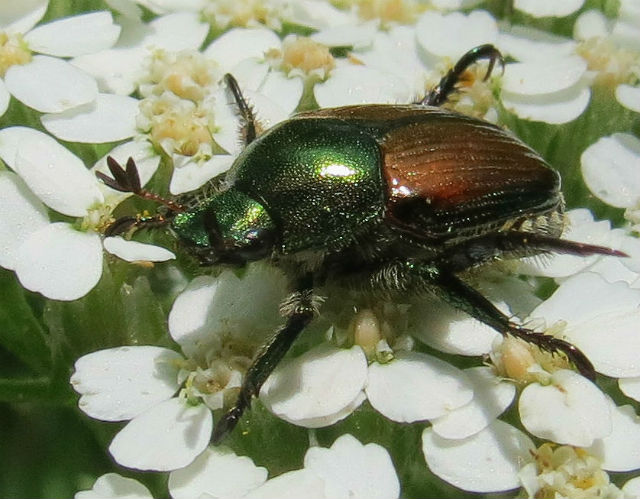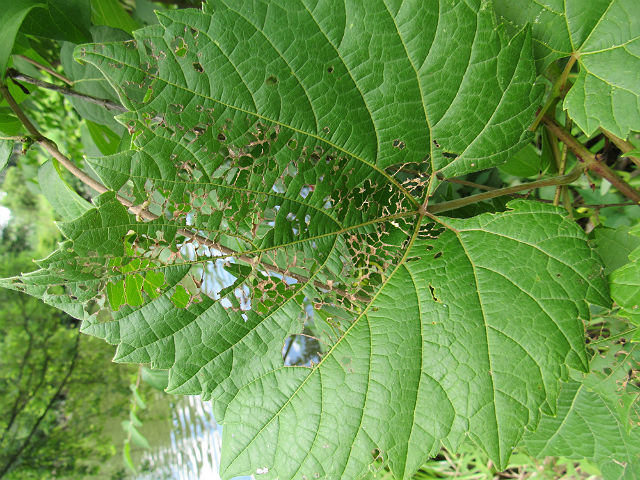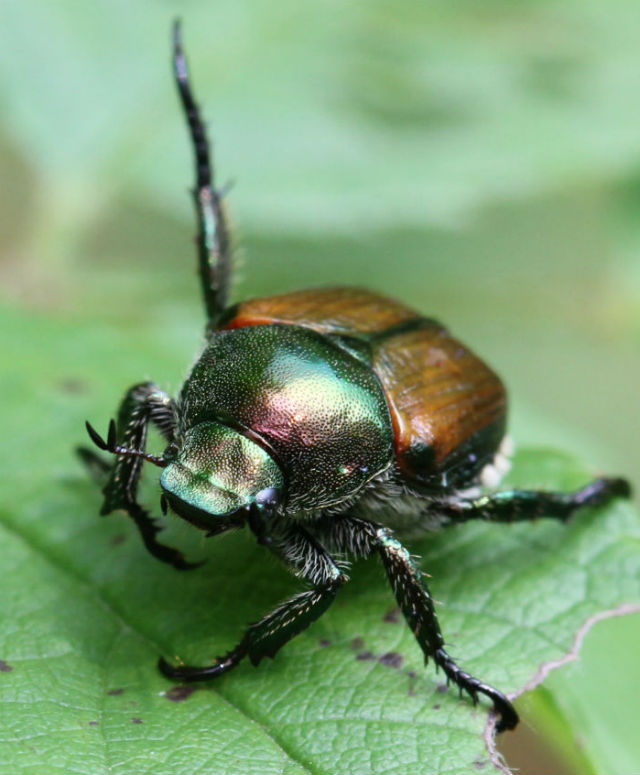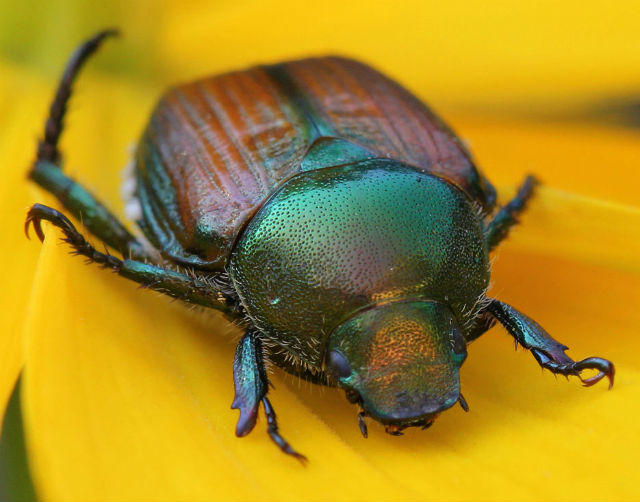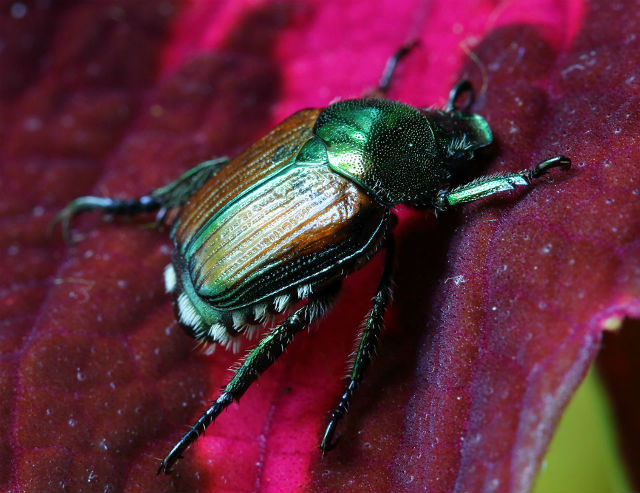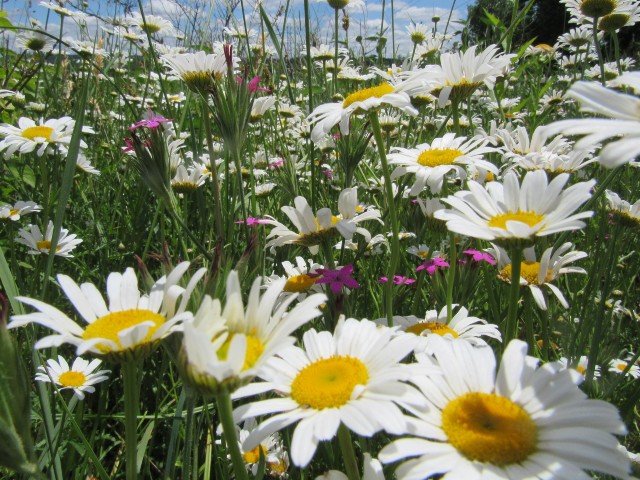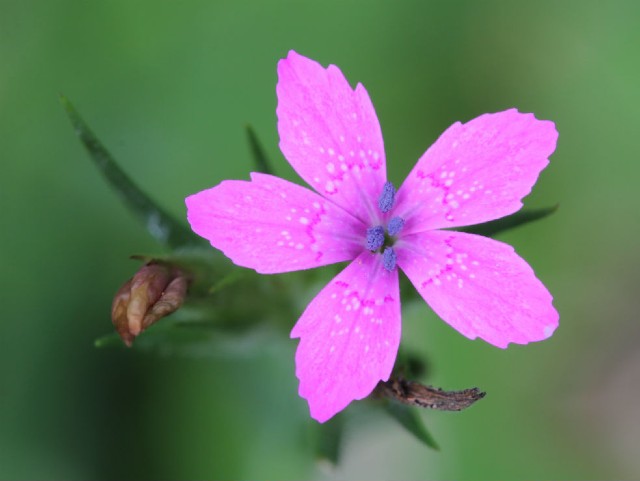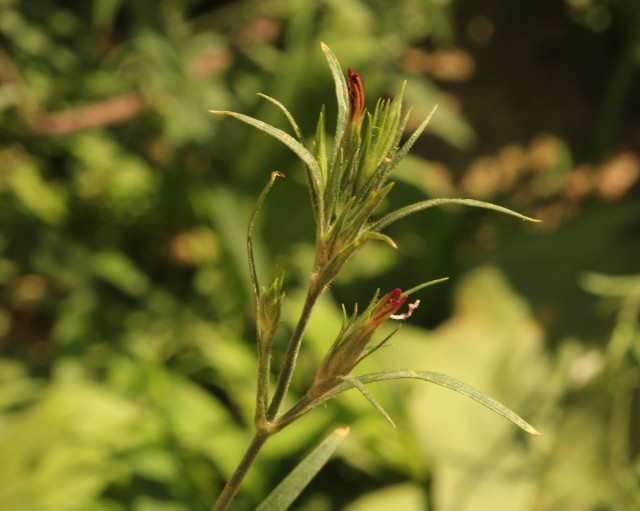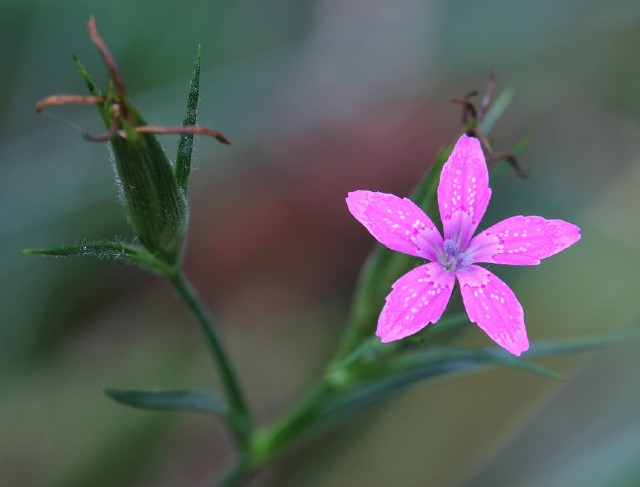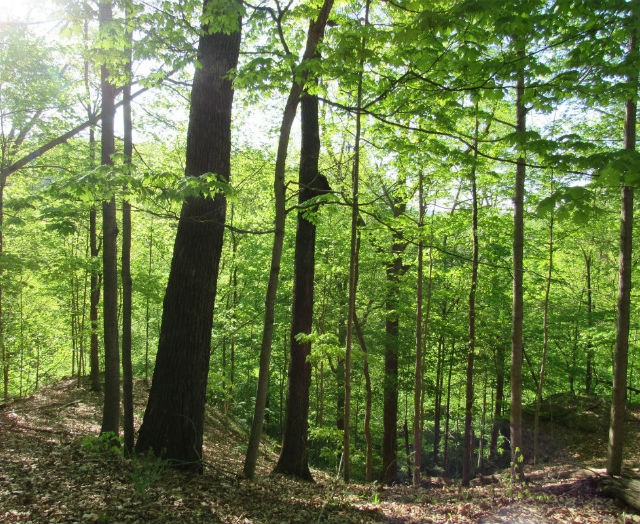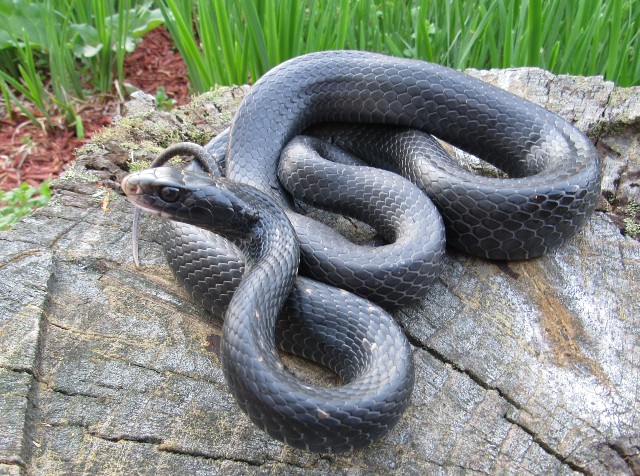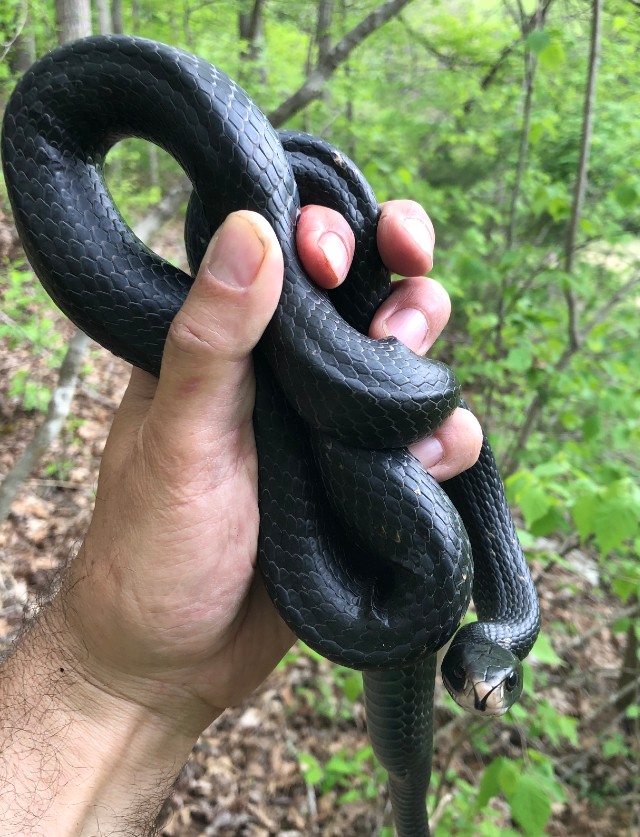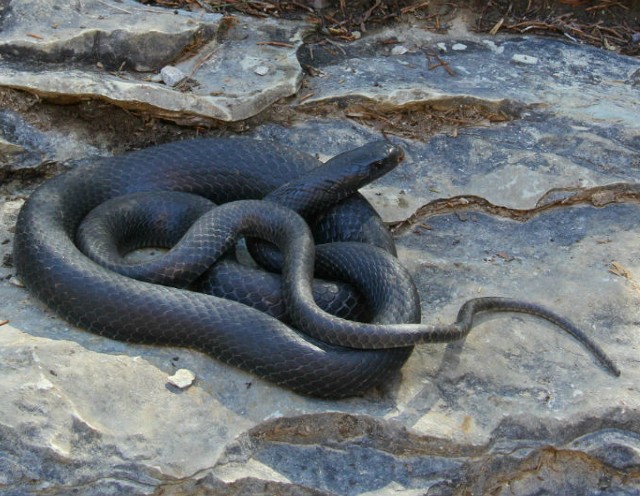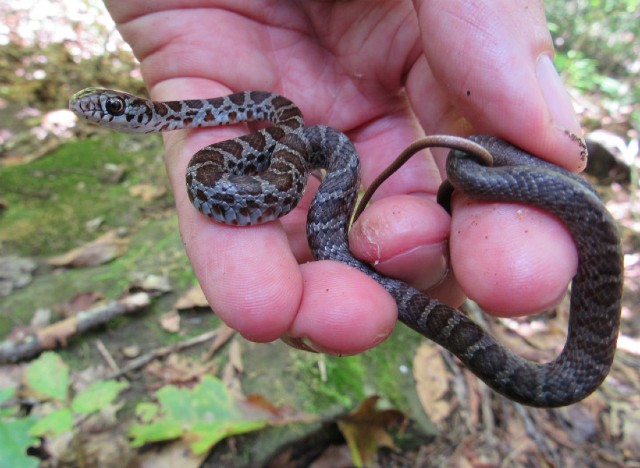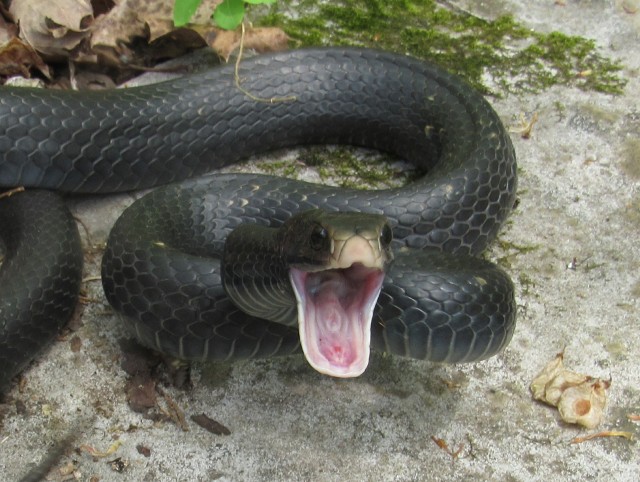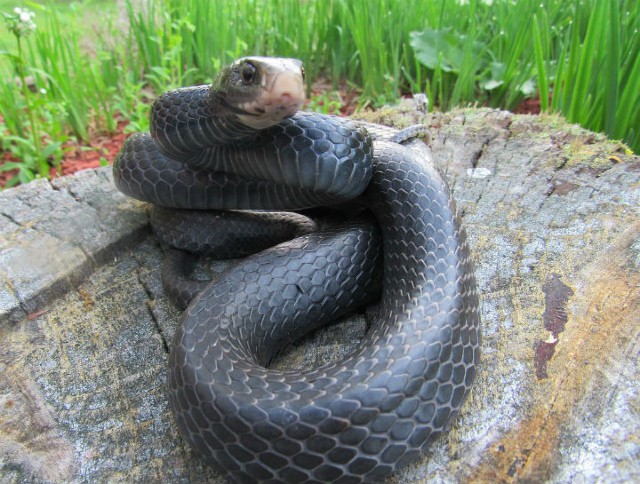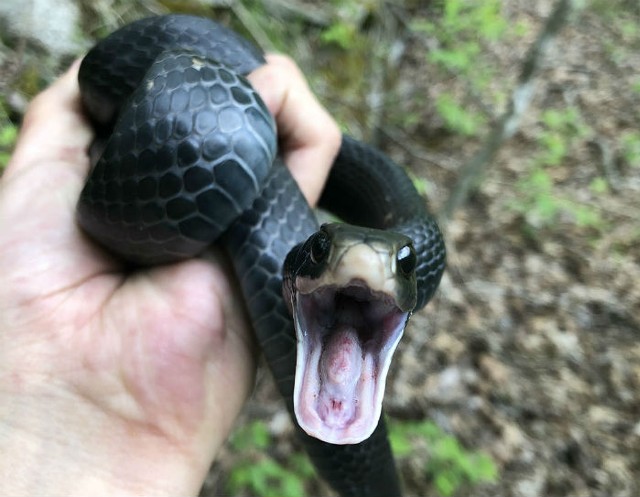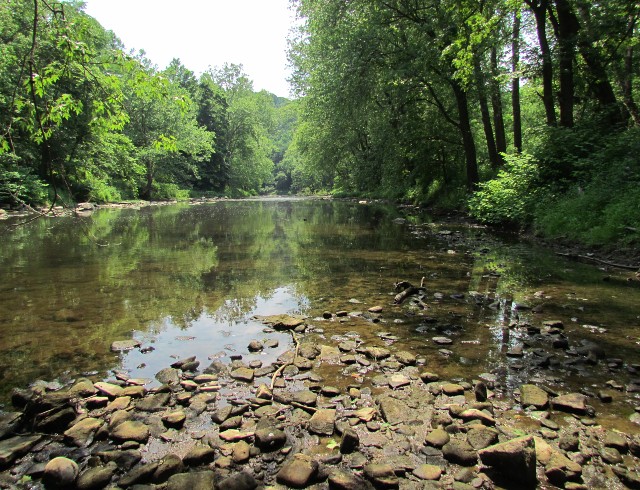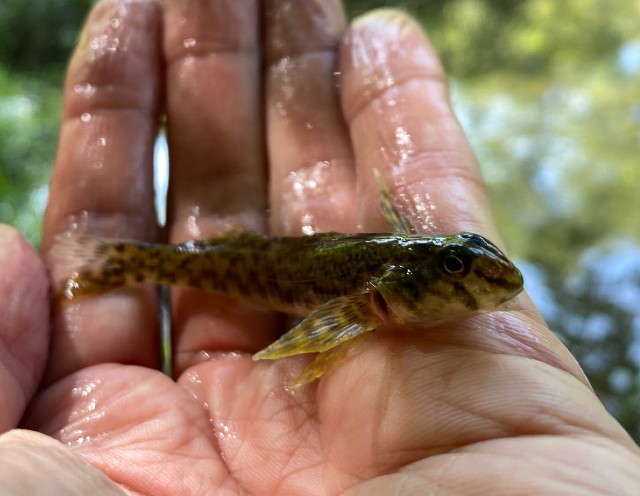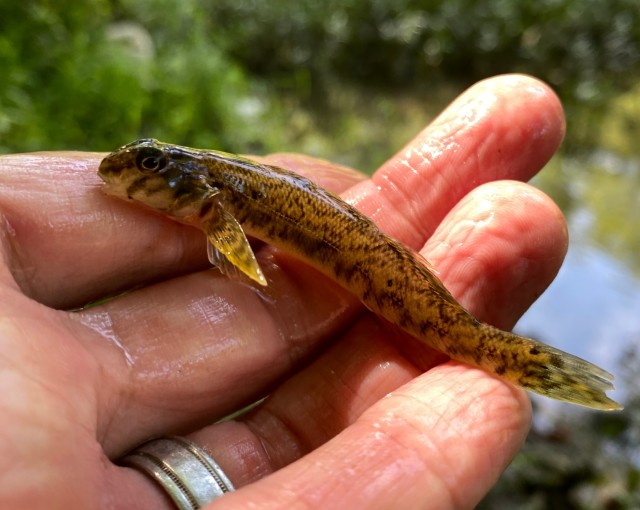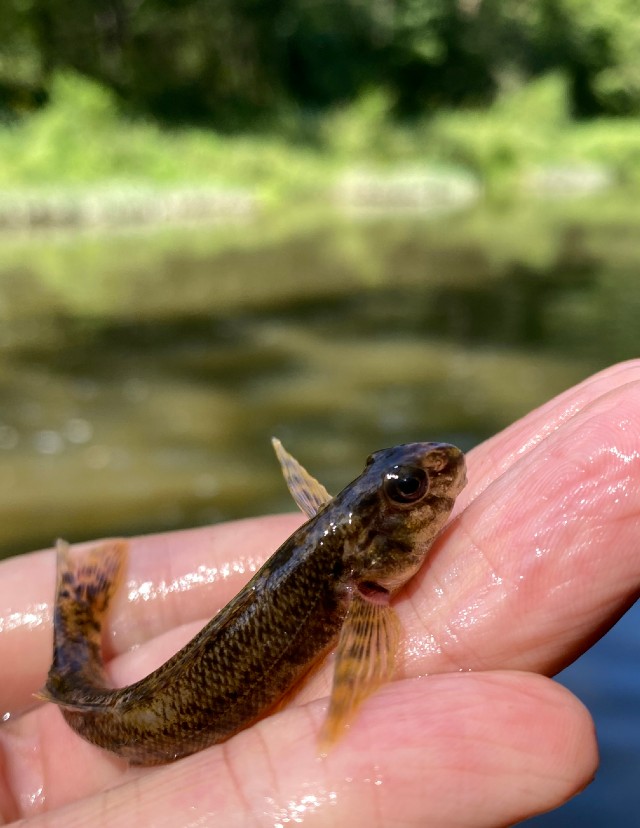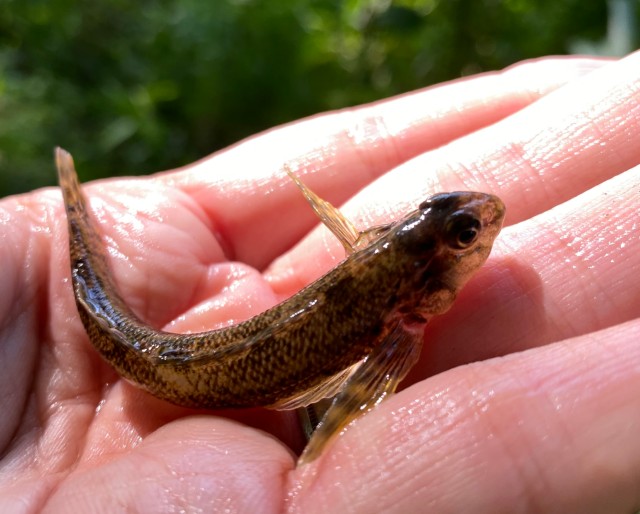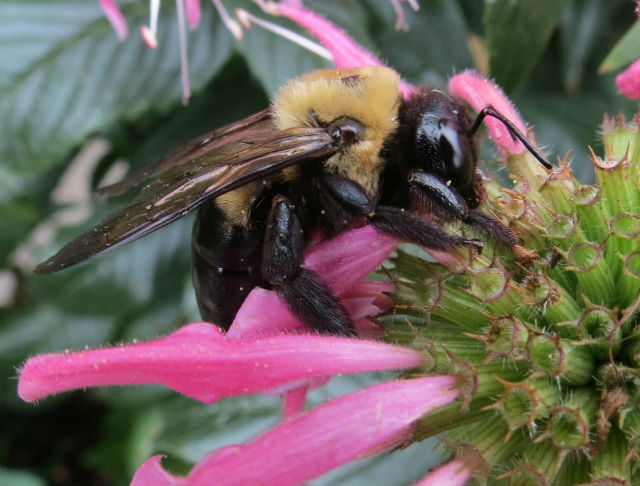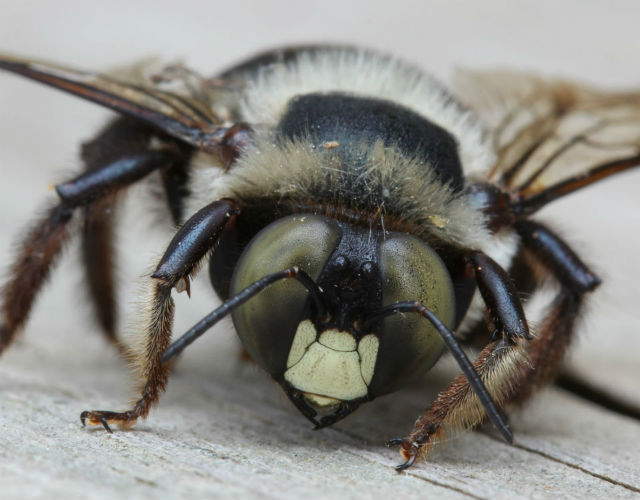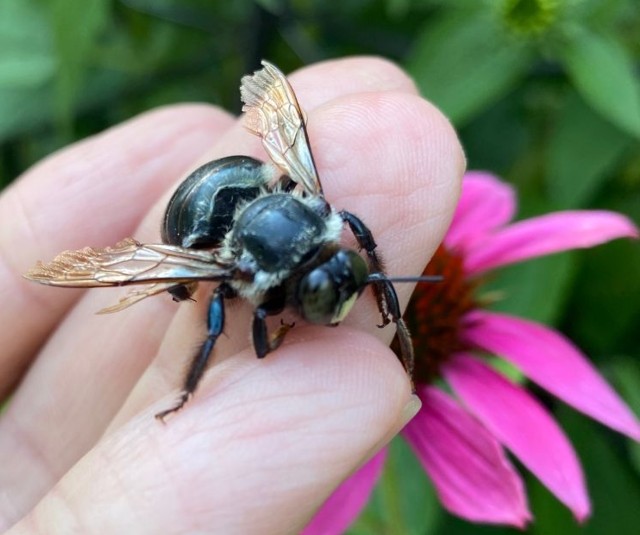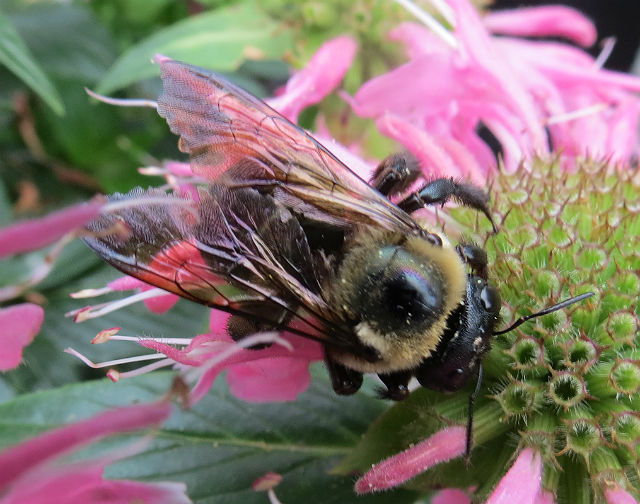This half-inch insect makes its presence known at this time of the year. It is easy to find in my backyard or while hiking in Cuyahoga Valley National Park.
It has iridescent copper-colored wing covers and metallic green head and body. A row of white hair-like tufts is present just below their wing covers.
Though not very destructive in Japan, where it is controlled by natural predators, in North America, it is a noted pest which attacks rose bushes and a variety of other plants.
Japanese Beetles damage plants by skeletonizing their foliage, eating only the leaf material between the veins; they may also feed on fruit on the plants if present.
Feeding adults release a congregation pheromone with attracts other adults as they emerge later, so that masses of adults gather on unfortunate victim plants.
Japanese Beetles can apparently live anywhere there is sufficient foliage to feed on. They are not limited to forests or grasslands, but often live on farms, cities and even your garden.
It is thought that beetle larvae from this insect entered the United States in a shipment of iris bulbs prior to 1912 (the time when inspections of commodities entering the country began).


